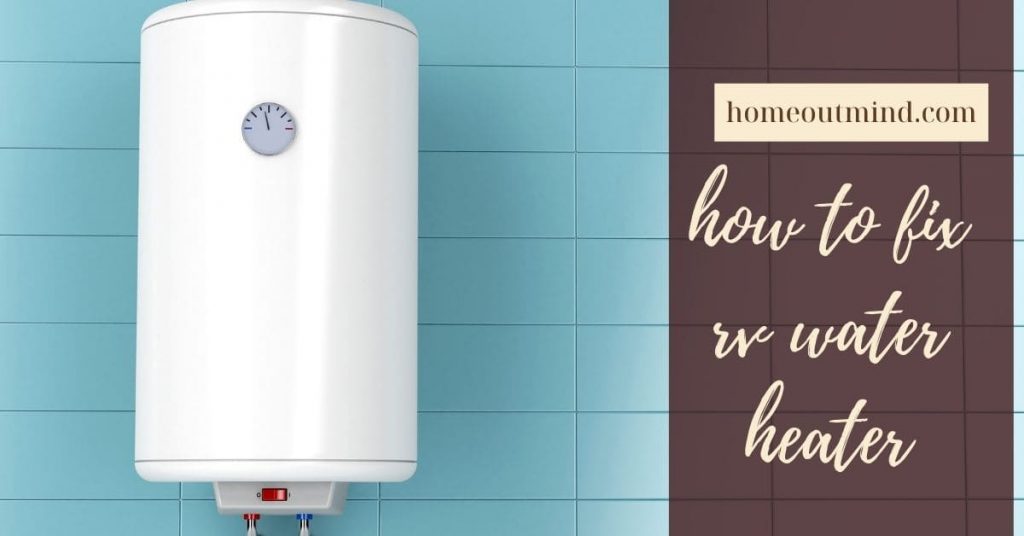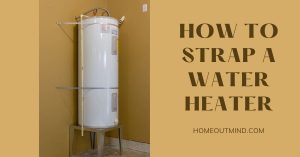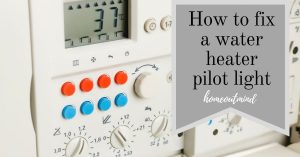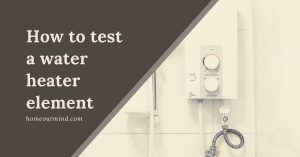Are you facing problems with your RV’s water heater and unsure how to fix them? You’re not alone.
Many RV owners encounter issues with their water heaters but lack the know-how to address them. In this guide, we’ll show you how to tackle common RV water heater problems. Let’s get started.

Step 1: Identify the Problem
- Take note of any issues you’re experiencing with your RV water heater, such as no hot water, inconsistent temperature, or leaks.
- Listen for unusual noises or odors that may indicate specific problems.
Step 2: Check the Power Source
- Ensure your RV is connected to a reliable power source or has sufficient propane for gas water heaters.
- Verify that there are no power outages or low propane levels causing the malfunction.
Step 3: Inspect the Heating Element
- Carefully examine the heating element for signs of corrosion or damage.
- Replace the heating element if necessary, following the manufacturer’s instructions.
Step 4: Flush the Tank
- Turn off the power and water supply to the water heater.
- Drain the tank completely and flush out any sediment using a hose until the water runs clear.
Step 5: Check for Leaks
- Inspect all connections and fittings for signs of leaks.
- Tighten loose connections and replace damaged components like seals or valves.
Step 6: Reset the Pressure Relief Valve
- Locate the pressure relief valve and carefully release any built-up pressure by lifting the lever.
- If the valve continues to leak or doesn’t reset, consider replacing it.
Step 7: Test the Thermostat
- Use a multimeter to test the thermostat for continuity.
- Replace the thermostat if it’s faulty and recalibrate it according to the manufacturer’s instructions.
Step 8: Insulate the Tank
- Consider adding insulation blankets or jackets specifically designed for water heaters to reduce heat loss and improve efficiency.
How does a water heater switch work?
1. Main 110V Power Switch
The primary 110V switch functions much like a standard light switch and typically illuminates when power is flowing through it. If the indicator light on the switch fails to illuminate, it may indicate a loose connection at the back of the switch or a tripped 110V circuit breaker.
Note that some newer models may utilize a rocker switch for electrical operation.
2. Secondary 110V Power Switch
Before activating the secondary 110V switch, it’s crucial to ensure that the water heater is filled with water. Operating the heater without water can lead to the rapid burnout of the heating element, necessitating replacement.
Even if your trailer is under warranty, damaging the electrical element due to improper operation is typically not covered.
How do I know if my water heater has water in it?
First: Verify the Water Heater Bypass
Ensure that the Water Heater Bypass is in its regular operational position. Many trailers feature a diagram on the basement storage door illustrating normal and bypass settings.
For those equipped with a Universal Docking Center (UDC) for water connections, the Water Heater Bypass can typically be found within the UDC. In other trailer configurations, the bypass valve is usually located indoors, near the water connections to the water heater, accessible via a drawer or panel.
Second: Check Faucet Flow
Open a faucet and confirm that water flows evenly when the tap is set to both Cold and Hot settings. While conducting this check, ensure that any outdoor shower faucets are turned off. Leaving them open can result in the mixing of cold and hot water, leading to lukewarm water from other faucets.
Note: When the water heater is in bypass mode and empty, checking water flow can be misleading. In bypass mode, cold water supplies flow through both the cold and hot lines.
If uncertain whether the water heater is in bypass mode, carefully open the temperature/pressure relief valve. With city water flowing or the pump pumping water, if the water heater is full, water will discharge from the relief valve.
How to Test the 110V Circuit to the Heating Element?
Firstly: Ensure Both 110V Switches Are On
Make sure that both 110V switches are turned on. The main switch, if functioning properly, should be illuminated. If it’s not lit, the circuit breaker may have tripped, or there could be a loose connection at the back of the light switch.
In normal operation, a thermostat regulates when to activate the heating element by closing the 110V circuit. When the water cools, the thermostat closes the circuit, allowing the heating element to heat the water. Once the water reaches the desired temperature, the thermostat opens the circuit to prevent overheating.
If the thermostat fails to open the circuit, the water temperature may continue to rise. To prevent dangerous overheating, a secondary sensor known as a Hi-Limit or Electric Cut Off (ECO) opens the electrical circuit to the element. This switch remains open, cutting power to the heating element until the RESET button is pressed. The left-hand button is for electrical circuit reset, and the right-hand button is for LP reset.
If both power switches are on but the electrical element isn’t heating the water, press both reset buttons on the back of the water heater. If pressing the reset buttons restores operation, it suggests that the thermostat may have failed to cut power to the heating element, allowing the water temperature to rise excessively. The Hi-Limit/ECO switch serves as a failsafe, cutting power when the thermostat fails to do so.
Why does my hot water heater keep tripping?
If the heating component repeatedly shuts down and operation is restored by pressing reset buttons, it’s likely that the Thermostat assembly (including the Hi-Limit/ECO switch) needs to be replaced.
Warning: Never bypass the Hi-Limit/ECO or Thermostat, as doing so could lead to unsafe conditions, causing property damage or personal injury.
How to fix 110V Not Getting to the Heating Element?
If the voltmeter fails to show 110V on the electrical element terminals, you’ll need to trace back to determine where the circuit interruption has occurred.
- Begin by testing for voltage on the thermostat and the Hi-Limit/ECO sensor.
- If voltage is present at one side of the Hi-Limit/ECO/Thermostat system but not the other, and the water remains cool, the system should be replaced. Before replacing, ensure both power switches are turned off, confirm that the water is cool, and drain the water heater.
- If there is NO power on either terminal of the Hi-Limit/ECO/Thermostat, check for power on both sides of the secondary 110V switch when it’s turned on. Turning off the switch should interrupt power flow.
How to relay behind the switch panel?
Some trailers may feature an internal water heater electrical switch that operates on 12V DC instead of 110V AC. DC switches are typically rocker switches, while AC switches are wall-type light switches.
A 12V DC switch powers a relay, likely located behind the switch panel. When energized, the relay provides 110V AC to the water heater.
110V is Present on the Heating Element
If the voltage on the heating element is correct (measured from the black wire’s terminal to the ground), it typically indicates a faulty or burned-out electrical element that needs replacement. Before changing the element, perform additional checks as outlined below.
How to Check Resistance of the Heating Element?
The heating element typically has a resistance of 14.5-17 Ohms.
- Begin by turning off both power switches. Before proceeding, use the voltmeter to confirm there is no voltage on the heating element.
- After verifying no voltage, remove one of the heating element wires to test the resistance.
- If resistance is infinite (open), replace the element.
Note: When testing continuity, avoid touching your meter leads to a hot wire (110V) to prevent damage to your meter and potential injury.
How to Replace the Heating Element?
Replacement Suburban heating elements can be purchased from most RV dealerships or online retailers. Compatible heating elements are also available at many big-box hardware stores. The standard element typically operates at 1440 watts.
Suburban offers a specialized element with a different composition that won’t be damaged if turned on without water in the water heater. When replacing the element, look for this newer type of element.
1. Turn off all Power Sources and Allow Water to Cool: Turn off both the 110V power switches and the LP switch, and ensure that the water in the heater has cooled.
2. Drain the Water Heater: Follow the procedure outlined later in this document to properly drain the water heater.
3. Remove the Heating Element Cover: Remove the cover from the heating element.
4. Disconnect Wires: Disconnect the wires from the heating element and gently bend them back away from the opening.
5. Access the Heating Element: The burner assembly barrel may block access to the heating element. Before removing the burner assembly, light a stove burner and then shut off the LP supply at the tanks to release residual pressure. This step reduces pressure in the lines during disassembly.
6. Remove the Burner Assembly Barrel: Using a 7/16” wrench, remove the burner assembly barrel.
7. Remove the Heating Element: Using a 1-1/2” socket or wrench, rotate the heating element counter-clockwise to loosen and remove it. If it’s stuck, apply penetrating oil to loosen it.
8. Clean the Mounting Surface: Clean the mounting surface where the new gasket will be applied to ensure a good seal.
9. Install the New Gasket and Element: Install the new gasket and heating element. Applying a coat of plumber’s grease to the new gasket will help prevent leaks. Using anti-seize on the element threads will make it easier to remove the element in the future.
10. Tighten the Element: Tighten to compress the gasket, but avoid overtightening.
11. Reattach Wires and Replace Cover: Reattach the wires and replace the cover.
12. Reconnect the Burner Assembly: Reconnect the burner assembly, ensuring all fittings are tight. Turn on the supply and check for leaks with a soapy water spray before and during the first lighting of the burner.
13. Install the Anode Rod and Fill the Water Heater: Install the anode rod and refill the water heater.
14. Test for Proper Operation: Finally, test the water heater for proper operation.
Frequently Asked Questions
How do you turn on an electric water heater?
To turn on an electric water heater, locate the circuit breaker or fuse box in your home. Ensure the breaker or fuse corresponding to the water heater is in the “on” position.
This step provides power to the water heater’s heating elements. For a detailed walkthrough including safety precautions and troubleshooting tips, delve into our comprehensive guide on Turning On an Electric Water Heater.
How to clean a tankless water heater?
Regular maintenance, including cleaning, is vital to uphold the efficiency and longevity of your tankless water heater. The process involves flushing out mineral deposits and debris that accumulate over time, hindering performance.
Dive deep into our extensive guide on Cleaning a Tankless Water Heater to discover effective descaling methods, maintenance schedules, and expert recommendations to keep your unit running smoothly.
How to fix a water heater pilot light?
Fixing a water heater pilot light involves several steps to ensure safe and efficient operation. Start by turning the control knob to “Pilot” and holding it in while clicking the igniter button.
If the pilot light doesn’t ignite, wait 10 minutes before attempting again. Check for loose connections or faulty components, such as the thermocouple or gas supply. For a comprehensive troubleshooting guide and step-by-step instructions, refer to our detailed post on Fixing a Water Heater Pilot Light.
How to install a hot water heater element?
Installing a hot water heater element requires caution and attention to detail. Begin by turning off the power to the water heater and draining the tank partially. Remove the access panels to access the heating element and disconnect the wires.
Install the new element by securely attaching it to the tank and reconnecting the wires. Ensure proper alignment and sealing to prevent leaks. For detailed installation instructions and safety tips, explore our comprehensive guide on Installing a Hot Water Heater Element.
How to replace a thermocouple on a water heater?
Replacing a thermocouple on a water heater is essential for maintaining reliable operation. Start by turning off the gas supply and pilot light, then disconnect the old thermocouple from the control valve.
Install the new thermocouple securely, ensuring proper alignment and connection. Relight the pilot light and test for proper function. For a detailed walkthrough and troubleshooting tips, consult our comprehensive guide on Replacing a Thermocouple on a Water Heater.
Final Thoughts
In conclusion following these steps will help you troubleshoot and fix most common issues with your RV water heater. Remember to prioritize safety and consult a professional if needed, especially if you’re unsure about any aspect of the repair process.
With proper maintenance and timely repairs, you can ensure your RV water heater performs optimally, providing you with hot water during your outdoor adventures.




